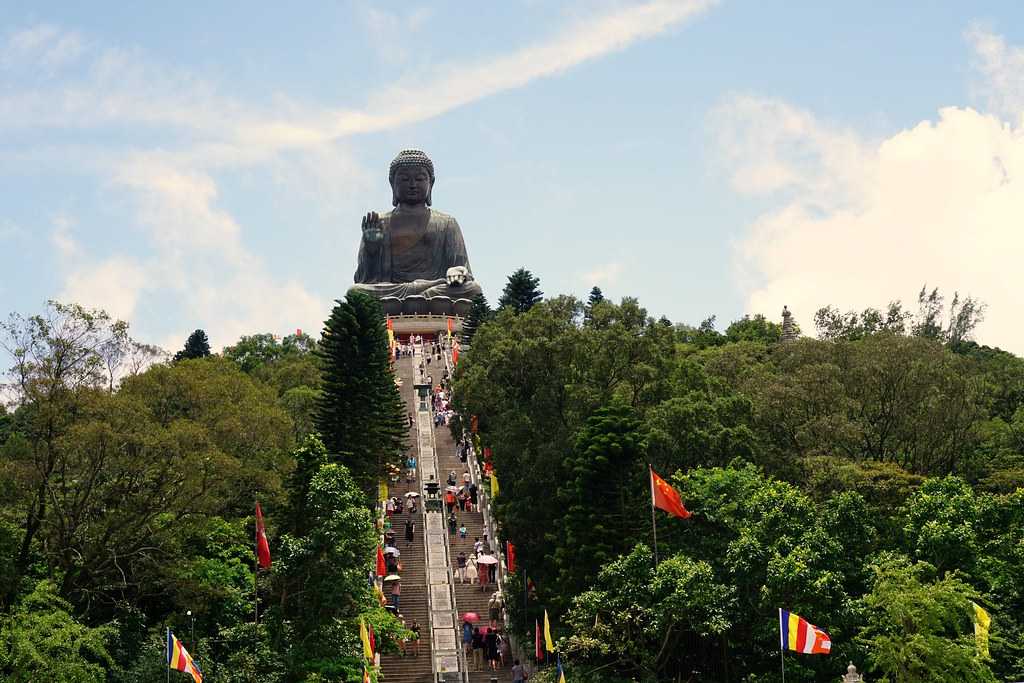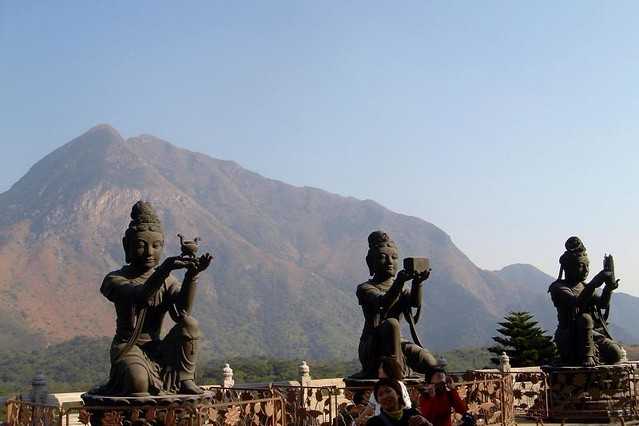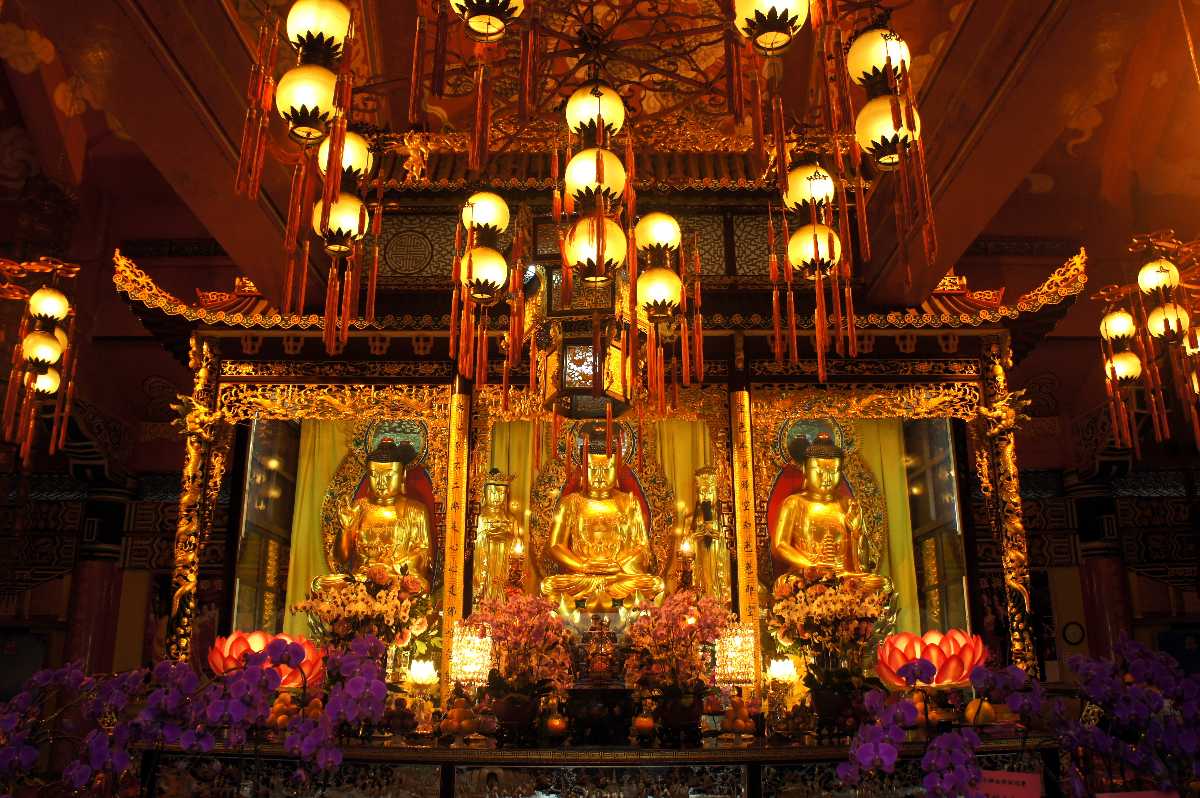Po Lin Monastery
₹ 285 onwards
View Hong Kong PackagesWeather :
Tags : Buddhist Temple
Timings : 8:00 AM - 4:00 PM
Time Required : 2-3 hours
Entry Fee : HKD 25
Po Lin Monastery, Hong Kong Overview
Po Lin Monastery is a Buddhist monastery sitting in the lap of Ngong Ping at Lantau Island. The highlight of the monastery is the 3 Buddha statues in its premise, representing the past, present and future lives. The famous Tian Tan Buddha statue is an extension of Po Lin Monastery.
‘Po Lin Monastery’ means ‘Precious Lotus’ and is a symbolic representation of purity. Founded in 1906, it is regarded as the centrepiece of Buddhism in the south. The small thatched hut temple is now transformed into one of the most important Buddhist centres in Hong Kong. This sacred landmark has an enchanting hall, restaurants, lush gardens and the impeccable Tian Tan Buddha sculpture that was constructed in 1993.
Read More on Po Lin Monastery
The Big Buddha

Source
There are six smaller bronze Buddha statues surrounding this Tian Tan sculpture. They are a symbolic representation of the six elements namely patience, morality, zeal, meditation, wisdom and generosity all of which together play an integral role in enlightenment. These beautifully sculpted Buddha figures make a religious offering to the lord. In order to reach the statue, visitors have to climb a total of 268 stairs. There is also a winding path to accommodate vehicles so that people with disabilities can visit the site.

Source
Architecture of Po Lin Monastery
In 1970, the central shrine hall of the Buddha known as the ‘Hall of Skanda Bodhisattva’ was completed. One has to pass the San Men to reach this shrine. It is an architectural splendour that has adopted the Ming and Qing’s intricate designs. There are several other halls in the temple complex including the Hall of Meditation, Sangha, Ksitigarbha Bodhisattva, Banruo and so on. However, the highlight is a computer automated bronze bell that weighs approximately 1 ton. On the other side, there are facilities for conducting religious rituals and ceremonies. All these edifices together complete the Po Lin Monastery complex and depict the magnificence of the Buddhist way of life, art and architecture.
History
In 1979, the authorities from Po Lin Monastery met the members of the Chinese Buddhist Association. Their strong bond played an integral role in the transformation of this sacred site. Since 1994, this monastery is supporting the development of more than 300 schools on the Chinese mainland and continues to grow every day.

Po Lin Monastery Vegetarian Restaurant
Best Time to Visit
Tips
2. Photography is prohibited in the exhibition halls
How To Reach Po Lin Monastery
Alternatively, take Tung Chung Station Exit B and board the New Lantao Bus no. 23 from the Town Centre. The bus journey is estimated around 45 minutes and once you reach the stop, walks for 8 minutes to reach Po Lin monastery.
You can also board a ferry from the Central terminal to reach Mui Wo from pier 6. Catch the New Lantao Bus no. 2 and get off at Ngong Ping bus stop. It will hardly take 40 minutes to reach the monastery.
Top Hotel Collections
Top Hotels Near Po Lin Monastery
Po Lin Monastery Reviews

Have a Question on Po Lin Monastery?

experience.